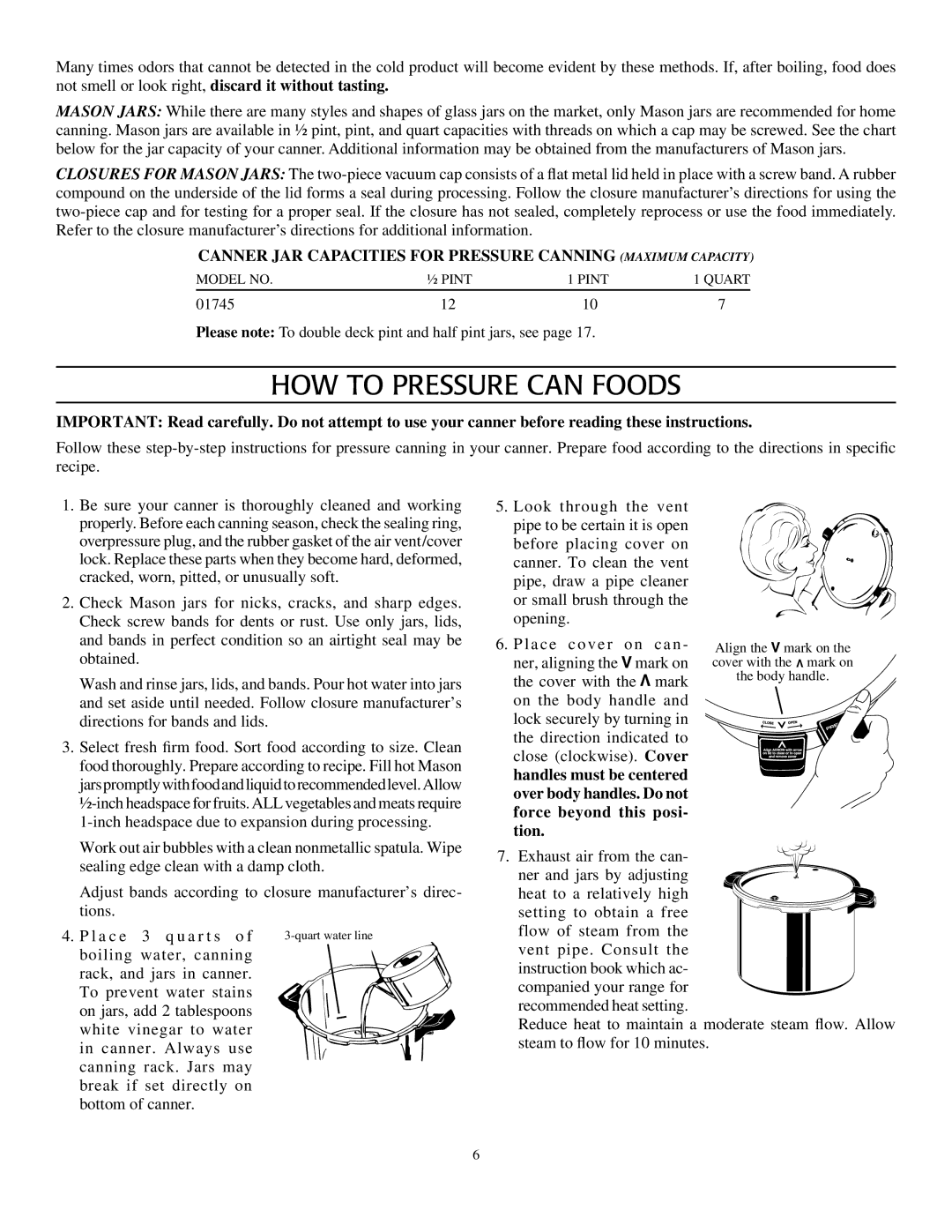Pressure Canner and Cooker specifications
The Presto Pressure Canner and Cooker is a versatile kitchen appliance that combines the functions of canning, cooking, and steaming in a single unit. Designed to meet the needs of home cooks and preservation enthusiasts, this pressure canner is both efficient and user-friendly, making it an essential addition to any kitchen.One of the standout features of the Presto Pressure Canner is its large capacity. With models that can hold up to 23 quarts, this canner allows users to process multiple jars of food at once, saving time and energy. This is particularly advantageous during harvest season when home canners are eager to preserve fruits, vegetables, and meats. The spacious interior ensures that even larger jars can fit easily, streamlining the canning process.
The Presto Pressure Canner is equipped with a durable aluminum construction that ensures even heat distribution and longevity. This material not only enhances its performance but also makes it lightweight yet robust, making it easy to handle. Moreover, the canner features a precision machined, easy-to-read pressure gauge that helps users monitor the pressure levels accurately, ensuring safe and effective canning.
One of the innovative technologies incorporated into the Presto Pressure Canner is its rated safety features. It includes a safety lock lid that prevents the lid from being opened while there is pressure inside, reducing the risks of accidents. Additionally, an overpressure plug helps release excess steam to prevent the canner from exploding, adding another layer of safety.
The Presto Pressure Canner also emphasizes versatility. It can be used not only for canning but also as a pressure cooker, allowing users to prepare a variety of dishes, such as soups, stews, and roasts in significantly less time than conventional cooking methods. The multi-functional nature of this appliance means it's suitable for everyday cooking and preserving seasonal produce.
Lastly, the Presto Pressure Canner is designed with user convenience in mind. It comes with a comprehensive instruction manual that includes tips for safe canning, cooking, and recipes, making it ideal for both seasoned canners and novices. Its intuitive design and straightforward operation make it easy to use, while its efficient performance has earned it a loyal following among home cooks.
In conclusion, the Presto Pressure Canner and Cooker stands out due to its large capacity, durable construction, and advanced safety features. Its multifunctionality enhances its value, making it an indispensable tool for anyone looking to preserve food efficiently or expand their kitchen capabilities.

